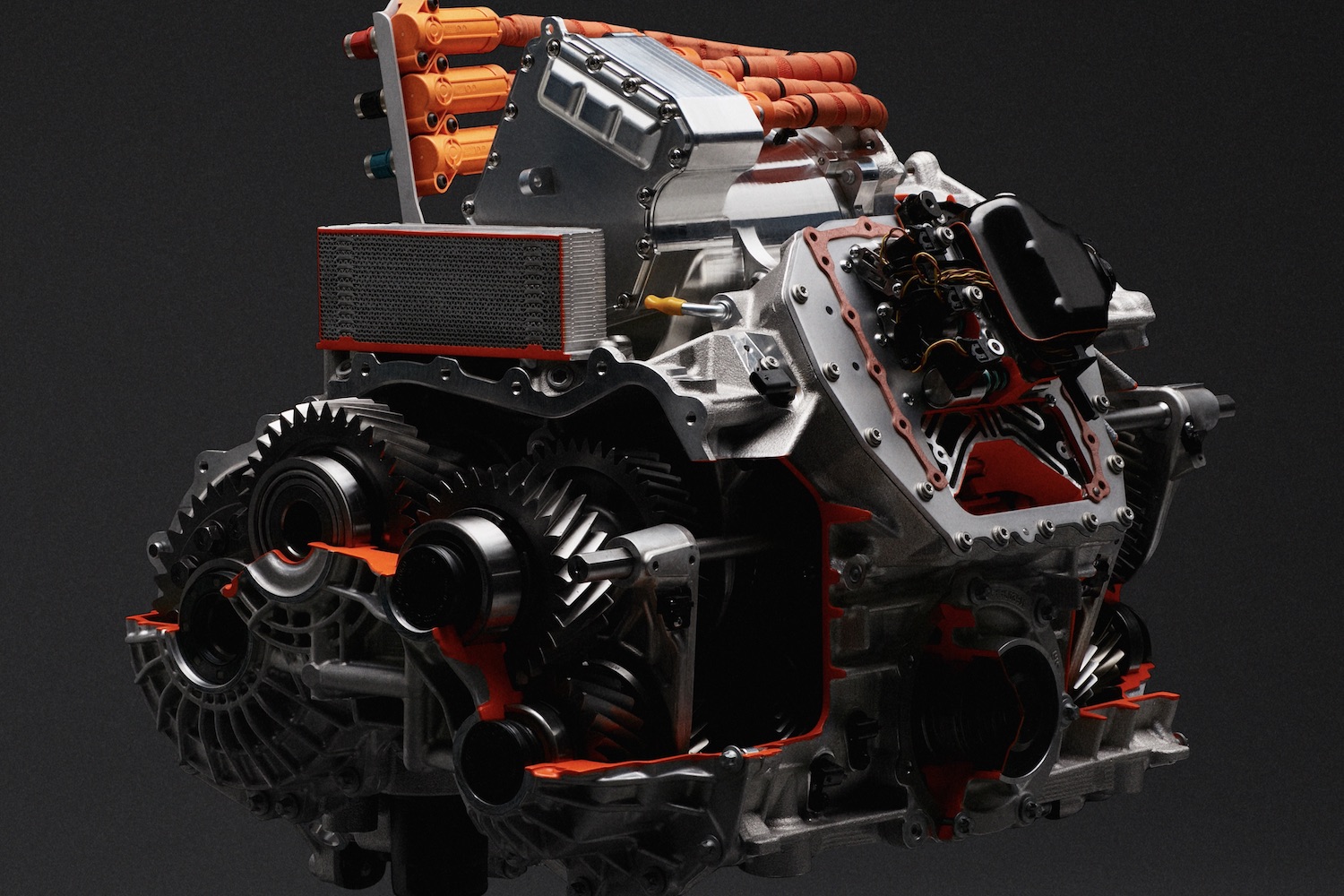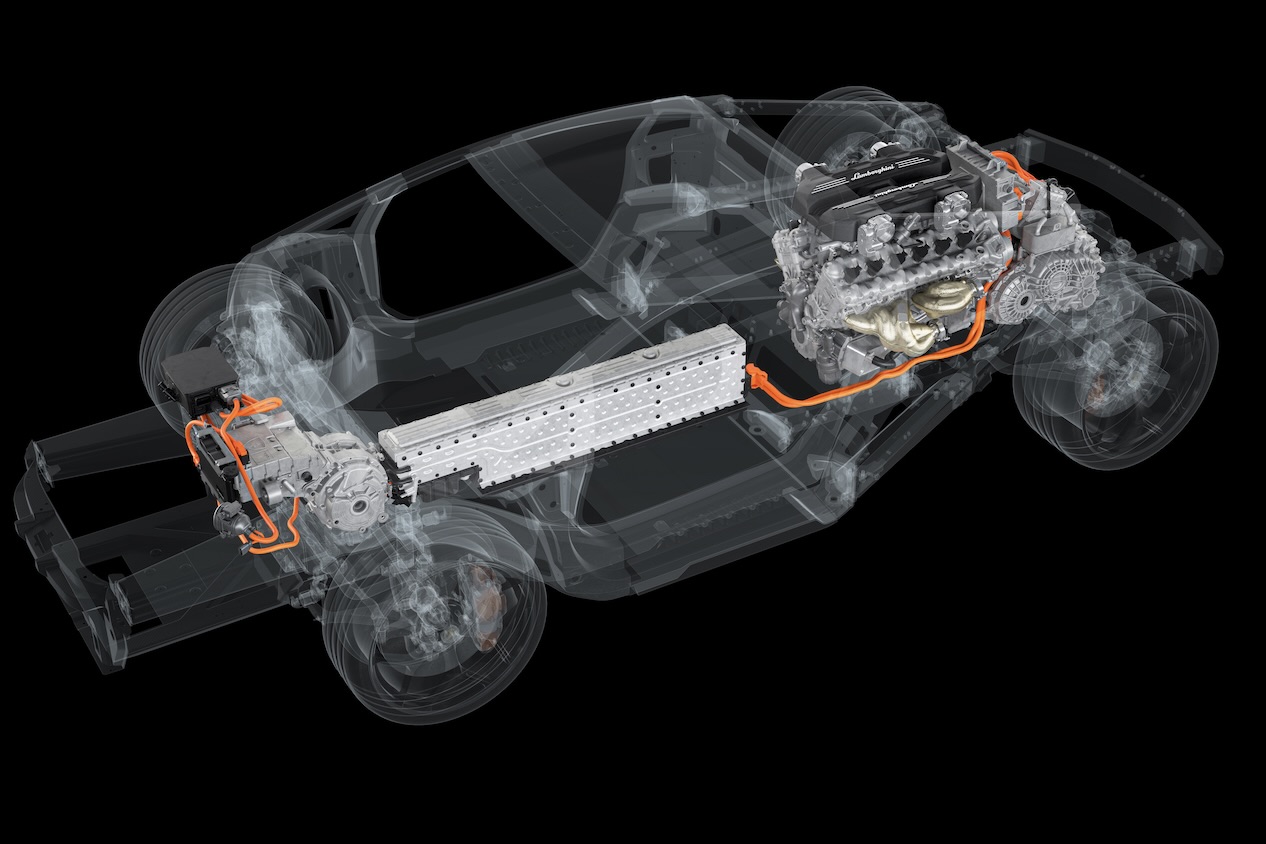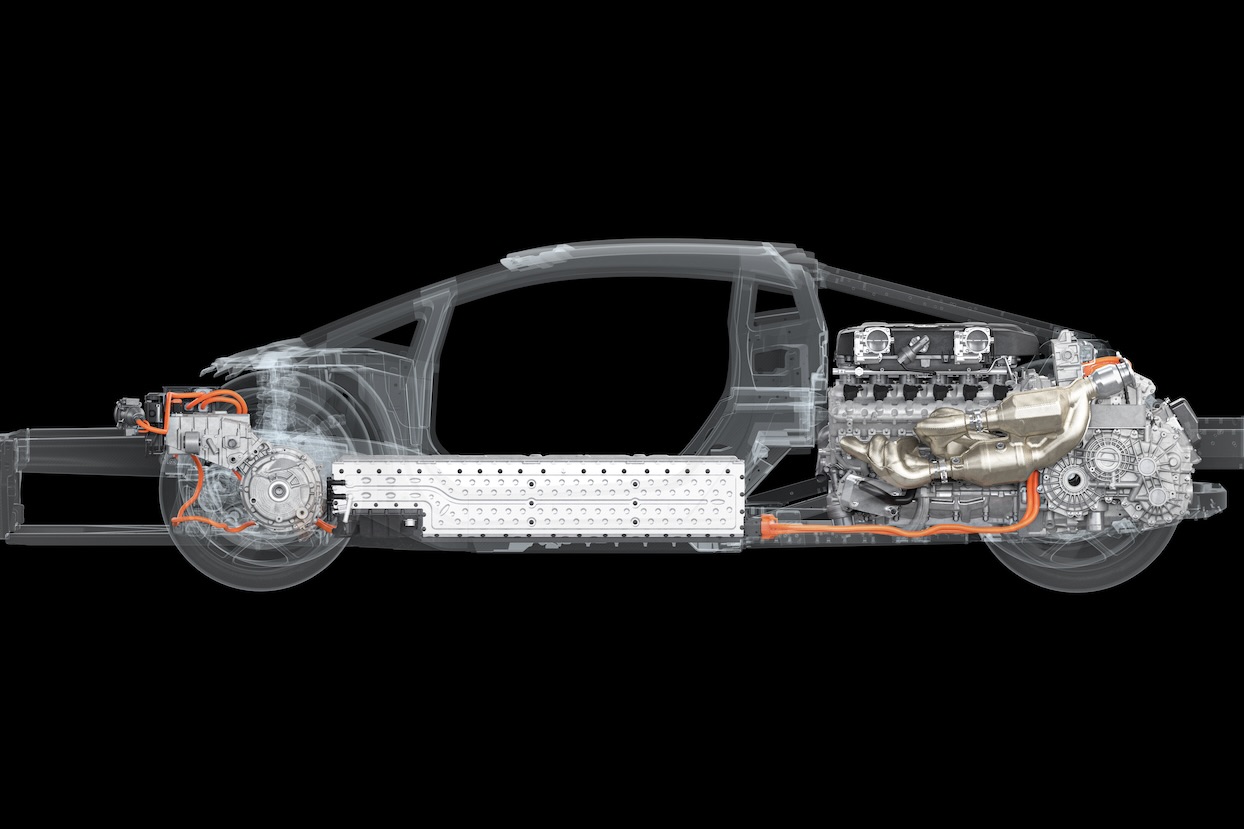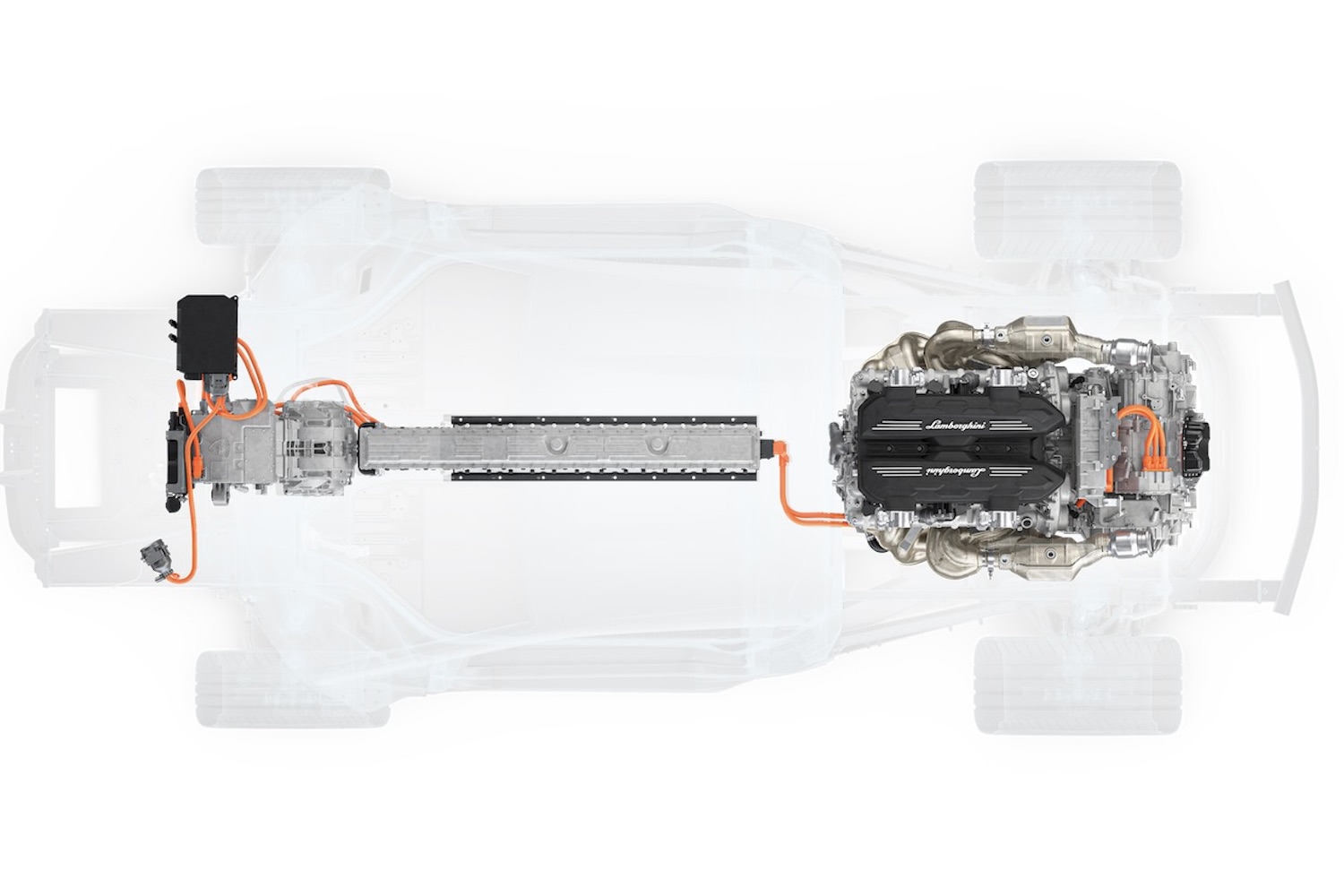Lamborghini is known for making world-class naturally aspirated engines. From the Huracan’s V10 to the Aventador’s V12, soulful engines are Lamborghini’s thing. Unfortunately, Lamborghini has discontinued the Aventador and its mighty V12 engine. While we don’t know what’s in store for the Aventador’s replacement, Lamborghini has given the world a look into its upcoming powertrain, which will include a plug-in hybrid component with three electric motors.
A PHEV from Lamborghini? It certainly sounds like the end times. But if you think Lamborghini is making something akin to the Toyota Prius Prime, that’s not what’s happening here. At the heart of the plug-in hybrid powertrain is a 6.5-liter V12 engine. The new L545 motor is a major upgrade of the Aventador’s 6.5-liter V12. The new engine weighs 37 pounds less, has more power, has a higher redline, and features a raised compression ratio of 12.6:1.

Getting into actual numbers, the new 6.5-liter V12 engine is good for 814 horsepower on its own. That’s a large upgrade over the Aventador, which made up to 769 horsepower in its most potent configurations. While peak horsepower comes at 9,250 rpm, the engine hits its redline at 9,500 rpm. If there’s one figure that hasn’t grown a lot, it’s torque. The new V12 is rated at 535 pound-feet, which is only 4 pound-feet more than the old 12-cylinder motor.
In addition to giving the engine a major overhaul, Lamborghini has also repositioned the way the gearbox and engine are packaged together. Unlike the Aventador, which had a single-clutch transmission that was positioned in front of the engine, Lamborghini has turned the new V12 180 degrees. Additionally, power is being routed through a new 8-speed dual-clutch transmission that Lamborghini designed that will sit behind the engine.
So far, these would be massive changes on their own, but the engine is getting a large helping hand from a plug-in hybrid component. Lamborghini will assist the V12 engine with three electric motors. Two axial-flux motors are located at the front – one on each wheel – and a third electric motor at the back that’s integrated into the transmission. The front electric motors allow for torque vectoring, while the rear electric motor can act as a starter motor, generator, or an extra source of power. On their own, each motor is capable of producing 148 horsepower – roughly the same amount of power as a compact car. Combined, Lamborghini claims the V12 engine and the electric motors are good for 1,001 horsepower.
The plug-in hybrid powertrain features a small 3.8-kWh battery pack that can be recharged via regenerative braking, the V12 engine, or a plug. With the V12 engine acting as a generator for the battery pack, Lamborghini claims the gas-fed motor can replenish the electricity in the pack in approximately six minutes. The downside is that its tiny size should result in a limited all-electric range. For people that are concerned about the planet in their V12-powered Lamborghini, CO2 emissions are apparently down 30% with the plug-in hybrid powertrain compared to the Aventador’s V12.
People that were worried that the spirit of Lamborghini would be diluted as the automaker heads toward an electrified future have nothing to worry about. As long as Lamborghini nails the styling, we suspect that most people will find the extra performance from the plug-in hybrid powertrain to be a large benefit of moving to electrification. More news about Lamborghini’s upcoming supercar and specs behind its plug-in hybrid engine should be announced in the near future.







